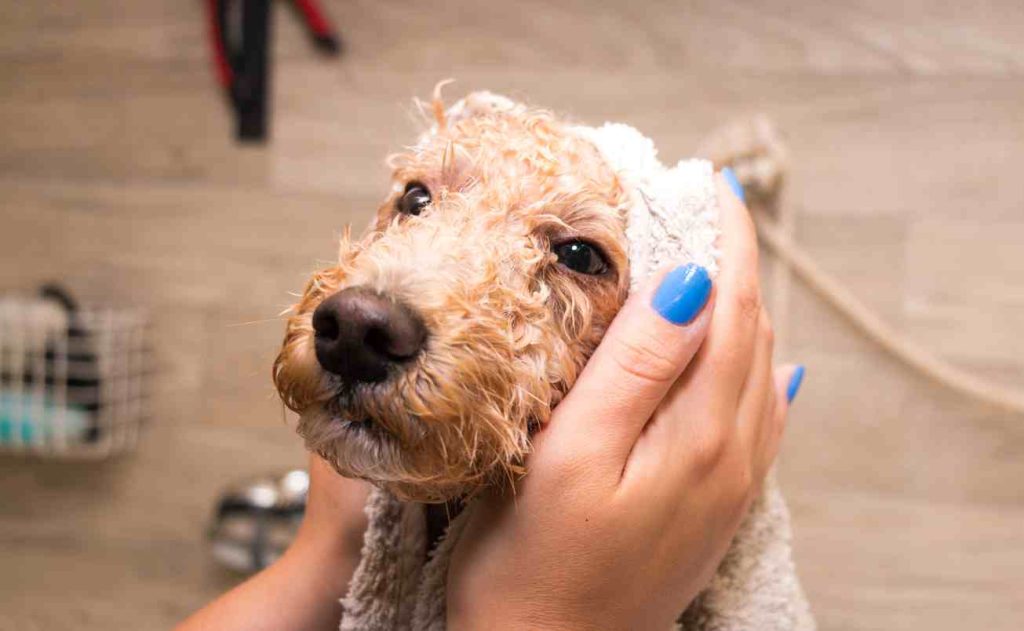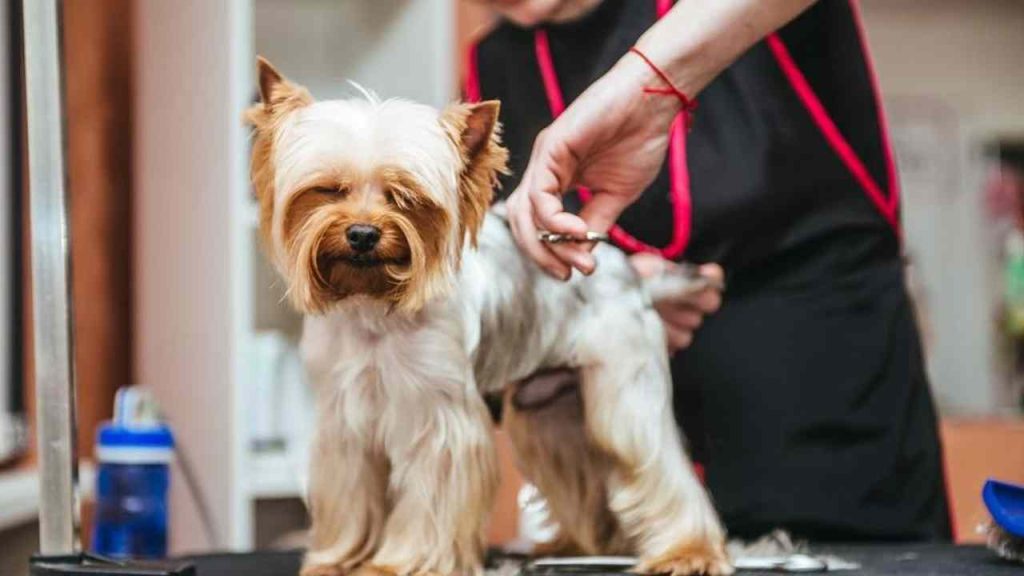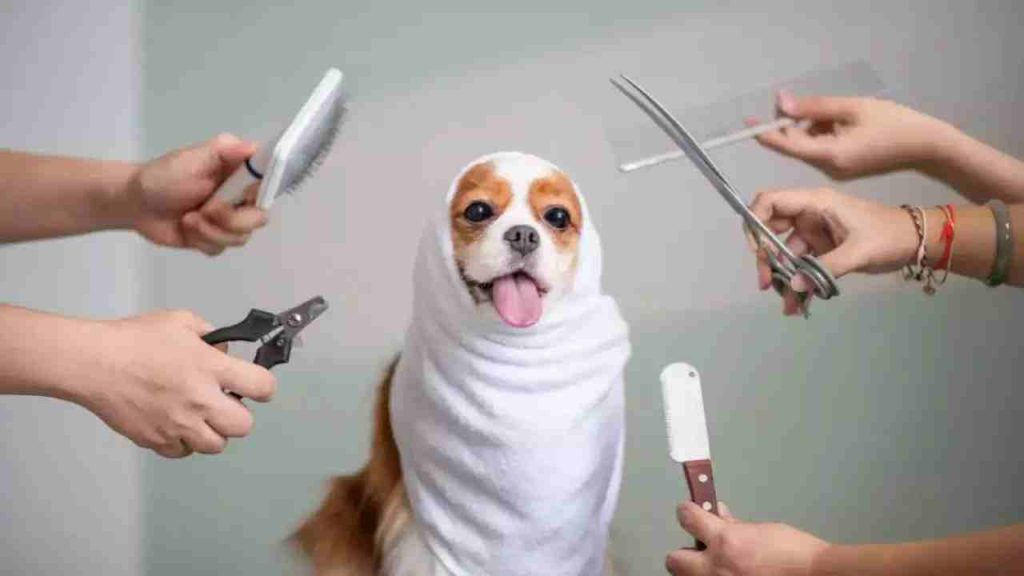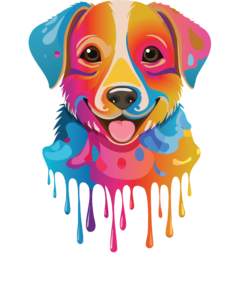After a thorough grooming session, your furry friend should look and feel their best. But what’s with all the post-grooming self-licking? It can be a bit frustrating when your pet spends more time cleaning themselves right after you’ve done all the work. In this guide with the help of Splish Splash, we’ll share some tips and tricks to help you keep your pet from licking themselves right after a grooming session, ensuring they stay fresh, clean, and ready to show off their pampered appearance.
While grooming is a natural behavior for animals, excessive licking can lead to skin irritations or even remove all the hard work of your pet’s stylish new look. So, how can you put a stop to this endless cycle of self-grooming? Whether you’ve just picked up your pet from the groomer or utilized professional pet grooming services, these strategies will help you strike the balance between allowing their natural grooming instincts and preserving that freshly groomed charm. Whether you have a cat, dog, or another furry companion, these tips will prove valuable in maintaining their post-grooming glow.
Understanding the Importance of Post-Grooming Behavior
Understanding this behavior is essential because it helps pet owners appreciate their pet’s instinctual reactions. By acknowledging its significance, you can approach the issue of excessive self-licking with empathy and patience, which is the first step in addressing the matter effectively. Furthermore, comprehension of this behavior allows pet owners to differentiate between normal grooming and when it becomes problematic. When it comes to paw treatments, keeping your gulfport dog’s feet in top shape, understanding your pet’s natural tendencies aids in creating a comfortable grooming experience. Empathetic handling during paw treatments ensures your dog’s overall well-being, fostering a positive connection between you and your furry companion.

The Consequences of Excessive Self-Licking
Excessive self-licking by your pet can lead to a range of consequences, both for the animal and for the owner. While some self-grooming is perfectly natural, an overzealous approach can result in skin irritations, hair loss, and even the undoing of a carefully done professional grooming session. Additionally, continuous licking can become a compulsive behavior, potentially causing stress to your pet. For pet owners, this could mean additional grooming expenses, as well as concerns about your pet’s well-being. Understanding dog pet body language during grooming can further aid in recognizing signs of distress or discomfort in your pet during grooming sessions, allowing you to take proactive measures to prevent excessive self-licking and maintain their well-being.
Choosing a Professional Pet Groomer
Selecting a reputable and skilled pet groomer is a key step in preventing post-grooming self-licking. An experienced groomer not only ensures your pet’s coat is well-maintained but also understands how to create a positive grooming experience. How to choose the right dog pet grooming services further emphasizes the importance of selecting a groomer who caters to your pet’s specific needs and preferences. Professional groomers use quality products, techniques, and equipment, which can contribute to the longevity of the grooming’s effects. They can also provide valuable insights and advice on how to manage your pet’s grooming after the session, helping to reduce excessive self-licking tendencies.

Proper Grooming Techniques
Grooming your pet at home involves more than just the right products and equipment. It’s essential to understand and implement proper grooming techniques. This includes brushing, bathing, trimming, and maintaining their fur or coat according to their specific breed and needs. If you’re grooming your pet at home, make sure to use the right grooming tools and follow recommended procedures. Improper techniques or tools can lead to discomfort, which might trigger excessive self-licking as a soothing response. Learning the correct grooming techniques and providing a comfortable grooming experience is crucial for preventing post-grooming self-licking.
Investing in Quality Grooming Products
High-quality grooming products can make a significant difference in your pet’s post-grooming behavior. Using the right shampoos, conditioners, and grooming tools not only ensures a successful grooming session but can also influence how your pet feels after the process. Quality products designed for pets often contain ingredients that promote healthy skin and coat. These products can help reduce itching, dryness, or irritation, which might lead to excessive self-licking. It’s worth investing in products that suit your pet’s specific needs and sensitivities, as this can contribute to a more pleasant post-grooming experience for your furry friend.

Maintaining a Clean and Comfortable Environment
The environment in which your pet spends their time plays a crucial role in post-grooming behavior. Ensuring your pet’s living space is clean and comfortable can reduce the likelihood of excessive self-licking. A clean environment helps prevent irritants like dust and allergens from settling on your pet’s coat, which might otherwise trigger itching and licking. Additionally, maintaining a comfortable living space, including cozy bedding and proper temperature control, can keep your pet content and less inclined to engage in self-soothing behaviors like excessive licking. Regular cleaning and comfort maintenance are key factors in addressing post-grooming behavior issues.
Distraction and Play: Diverting Their Attention
One effective strategy to prevent excessive self-licking after grooming is to divert your pet’s attention with engaging activities and play. By providing toys and interactive games, you can shift their focus away from their freshly groomed coat. Playtime and mental stimulation not only keep your pet physically active but also mentally engaged, reducing the likelihood of post-grooming behavior problems. Offering a variety of toys and activities that cater to your pet’s preferences can help keep them entertained and less prone to engage in self-licking out of boredom or anxiety.
Incorporating Positive Reinforcement
Positive reinforcement can be a powerful tool in addressing post-grooming self-licking. Reward your pet for exhibiting good behavior after grooming, such as staying calm and not excessively licking themselves. This reinforcement can be in the form of treats, praise, or affection, making your pet associate post-grooming time with positive experiences. By rewarding desired behaviors, you can help break the cycle of excessive self-licking and create a more enjoyable post-grooming routine for both you and your furry companion. Consistency and patience are key when implementing positive reinforcement techniques.
Monitoring and Supervision
Keeping a close eye on your pet after grooming is vital in preventing excessive self-licking. Monitor their behavior for signs of stress, discomfort, or excessive licking. Supervision allows you to intervene promptly if you notice any concerning behavior. This can include redirecting their attention, offering comfort, or addressing potential irritations. Effective monitoring ensures that post-grooming issues are detected early, allowing for immediate action to keep your pet comfortable and prevent complications related to excessive self-licking.
Adjusting Their Diet for Healthier Skin and Coat
The food your pet consumes has a direct impact on the health of their skin and coat. To reduce the likelihood of excessive self-licking and improve the condition of their fur, consider adjusting their diet. Providing a well-balanced diet with high-quality ingredients can enhance their skin and coat health. Omega-3 fatty acids and essential nutrients play a crucial role in maintaining a glossy and healthy coat. Consult with your veterinarian to determine the most suitable diet for your pet’s specific needs and breed, which can contribute to minimizing post-grooming self-licking.
Consulting a Veterinarian for Persistent Issues
If you’ve tried various strategies to prevent excessive self-licking and the issue persists or worsens, it’s advisable to consult with a veterinarian. Persistent self-licking can be a sign of underlying health problems, skin irritations, allergies, or behavioral issues that require professional evaluation and treatment. A veterinarian can conduct a thorough examination, offer guidance, and recommend appropriate treatments or interventions to address the root cause of the problem. Seeking professional help is essential to ensure your pet’s well-being and prevent post-grooming self-licking from becoming a chronic issue.
Conclusion:
In conclusion, understanding and effectively managing post-grooming self-licking in your beloved pet are essential for their well-being and the preservation of their stylish appearance. Recognizing the significance of this behavior, while being aware of its potential consequences, is the first step in addressing the issue. By choosing a reputable professional groomer, applying proper grooming techniques, and investing in high-quality products, you can create a positive grooming experience that reduces the likelihood of excessive self-licking. Maintaining a clean and comfortable environment, offering distraction through play, and using positive reinforcement all contribute to a more enjoyable post-grooming routine for your pet. Consistent monitoring and supervision help detect early signs of stress or discomfort, allowing for timely intervention.
FAQs:
Why does my pet excessively lick themselves after grooming?
Excessive post-grooming self-licking can be a response to itchiness, discomfort, or the need to reestablish their scent. Understanding the underlying reasons is crucial to address the behavior effectively.
2. Can I groom my pet at home to prevent excessive self-licking?
Yes, you can groom your pet at home, but it’s essential to use proper techniques, quality grooming products, and ensure a comfortable environment to minimize self-licking tendencies.
3. What role does positive reinforcement play in preventing self-licking?
Positive reinforcement, such as rewarding your pet with treats and praise for not excessively licking after grooming, can help break the cycle of self-licking and create a more positive post-grooming experience.
4. How can I monitor my pet for signs of excessive self-licking?
Regularly observe your pet for behaviors like constant licking, signs of skin irritations, or restlessness. Monitoring helps you detect early signs and take timely action.
5. When should I consult a veterinarian about my pet’s self-licking behavior?
If self-licking persists, worsens, or is accompanied by other concerning symptoms, it’s advisable to consult a veterinarian to rule out underlying health issues and receive professional guidance on treatment and management.


